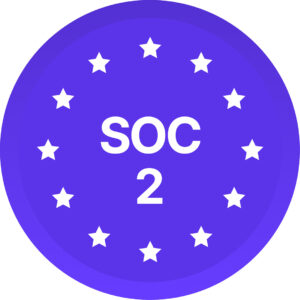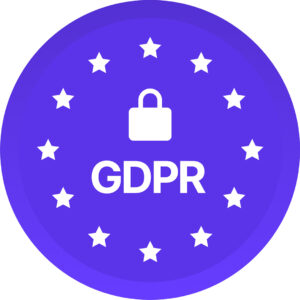International Pronouns Day is an annual observance that takes place on the third Wednesday of October. It was established to raise awareness about the importance of respecting and using correct pronouns for people of all gender identities and expressions.
International Pronouns Day serves as an opportunity to promote inclusivity, educate people about different pronouns, and create a more welcoming environment for transgender and non-binary individuals who might use pronouns that differ from the ones traditionally associated with their assigned sex at birth.
Celebrating International Pronouns Day and the importance of pronouns matters to me as someone whose friends and colleagues use a number of diverse pronouns, and who is often asked to explain why I forgo pronouns and ask that people use my name. This day recognizes the importance of respecting the way that those around us want to be seen for who they are.
For me, this means using my name instead of a pronoun, which makes me feel that the person I am speaking to recognizes me for my unique experiences outside of what would be attributed to any particular prescribed gender(s).
I hope that when people are intentional in using my name when they think of me, they are also inclined to be thoughtful in their words when speaking of me.
Recognizing and using the correct way of referring to others is a fundamental aspect of treating people with dignity and respect, and it helps create more inclusive and affirming spaces.
What is a pronoun?
Pronouns are linguistic tools used to refer to people or things without explicitly using their names. They are an important part of communication as they can help us avoid redundancy and make conversations smoother. Pronouns can indicate the gender, number, and role of the entity being referred to.
It’s important to note that pronoun usage can vary based on the gender identity of individuals. Pronouns are an essential aspect of respecting individuals’ identities and gender expressions. Some people might use pronouns like “he,” “she,” or “they,” while others might prefer neo pronouns like “ze,” “ey,” or “they/them.” Respecting an individual’s pronouns is a crucial aspect of inclusive and respectful communication. It’s important to use the correct pronouns for individuals to create an inclusive and respectful environment.
Common pronouns
In English, some of the common pronouns include:
- Personal Pronouns:
- Singular: I, you, he, she, it
- Plural: we, you, they
- Possessive Pronouns:
- Singular: mine, yours, his, hers, its
- Plural: ours, yours, theirs
- Reflexive Pronouns:
- Singular: myself, yourself, himself, herself, itself
- Plural: ourselves, yourselves, themselves
Neo pronouns
Neo pronouns are a category of gender-neutral pronouns that go beyond the traditional sets of pronouns like he/him, she/her, and they/them. Neo pronouns are often created by individuals to better reflect their gender identities, which might not fit within the binary concepts of male and female.
Unlike conventional pronouns, neo pronouns can be composed of any combination of letters or sounds, and they might not follow the usual grammatical patterns. Some examples of neo pronouns include:
- Zi/zir/zirself
- Xe/xem/xyrself
- Faer/faers/faerself
- Ey/em/eirs
- Per/pers/perself
These examples are just a few among many possible combinations. Neo pronouns can vary widely and can be quite unique to the individual using them. Using someone’s preferred neo pronouns is a way to respect their gender identity and create an inclusive environment. If you meet someone using neo pronouns, it’s a good practice to ask them how they would like to be referred to and to make an effort to use the pronouns correctly. Open communication and understanding are key when it comes to pronoun usage. Top of Form
No pronouns/name use
Some people choose not to use pronouns, and prefer that people use a first name instead. Using someone’s name is also a respectful way to refer to someone whose pronouns are not known.
The reasons that a person may not use pronouns may vary:
- There may not be a set of pronouns that feels right for that individual.
- The person might be figuring out what pronouns to use in the future and may not want to use any in the meantime.
- There may be pronouns that fit but are not in common use, and explaining them feels exhausting.
If you’re unsure about someone’s pronouns, it’s always best to ask politely or use gender-neutral language until you know their preferences.
How organizations can celebrate International Pronoun Day
International Pronouns Day encourages individuals, organizations, and communities to get involved by:
- Supporting Trans and Non-Binary Individuals: Showing support for transgender and non-binary individuals, acknowledging their identities and experiences.
- Advocacy and Support: The day may also serve as an opportunity for advocacy efforts to raise awareness about the challenges faced by transgender and non-binary individuals and to promote legal protections and social acceptance.
- Respecting Pronouns: Emphasizing the significance of using the correct pronouns for everyone, regardless of their gender identity or expression.
- Social Media Campaigns: Social media platforms are used to spread awareness and share information about pronoun usage, with the use of hashtags like #InternationalPronounsDay.
- Educating: Raising awareness about different pronouns and neo pronouns and why they matter, helping to foster understanding and acceptance.
- 2SLGBTQIA+ training: To explore the importance of gender diversity and inclusion.
- Workshops: Educational events and workshops are held to inform people about gender diversity, the importance of pronouns, how to use them correctly, and why they matter.
- Educational Materials: Organizations may create or share educational materials and resources to promote understanding and respect for gender pronouns.
- Normalizing conversation: Encouraging conversations about pronouns and gender identity, reducing stigma and misconceptions.
- Community Building: Hosting International Pronouns Day events to encourage discussions and conversations about gender identity, pronouns, and LGBTQ+ issues.
- Creating inclusivity: Promoting environments where people feel comfortable sharing their pronouns and where others use those pronouns respectfully.
- Pronoun sharing: People may share their own pronouns on social media profiles, email signatures, or name badges to normalize their usage and create a more inclusive online and offline environment.
By recognizing International Pronouns Day and practicing respectful pronoun usage year-round, individuals and communities contribute to creating a more inclusive and understanding society for people of all gender identities and expressions.
Remember that using correct pronouns is an ongoing practice that goes beyond a single day. Being respectful and understanding of individuals’ pronouns is a way to contribute to a more inclusive and accepting society.
Resources:
- International Pronouns Day
- Inclusive Language: How to Use It & Why It Matters
- What are personal pronouns and why do they matter?
- Understanding Neopronouns
- What do you do when someone doesn’t use any pronouns?
- Avoiding gendered forms / no pronouns
- Supporting the Transgender People in Your Life: A Guide to Being a Good Ally
- #InternationalPronounsDay
- CCDI Educational Courses and Learning Paths
- Celebrating and Elevating 2SLGBTQIA+ Communities Recording
- Sharing Your Pronouns
This blog was originally published by Diversio EDU (formerly CCDI Consulting) in October 2023.
Our newsletter and blogs feature personal opinions and diverse viewpoints. We aim to create a safe space for our team to share their perspectives on diversity and inclusion. Please note that individual articles may not align with every reader’s view or comprehensively cover a topic. We appreciate the diversity of opinions and respect our team’s contributions.

